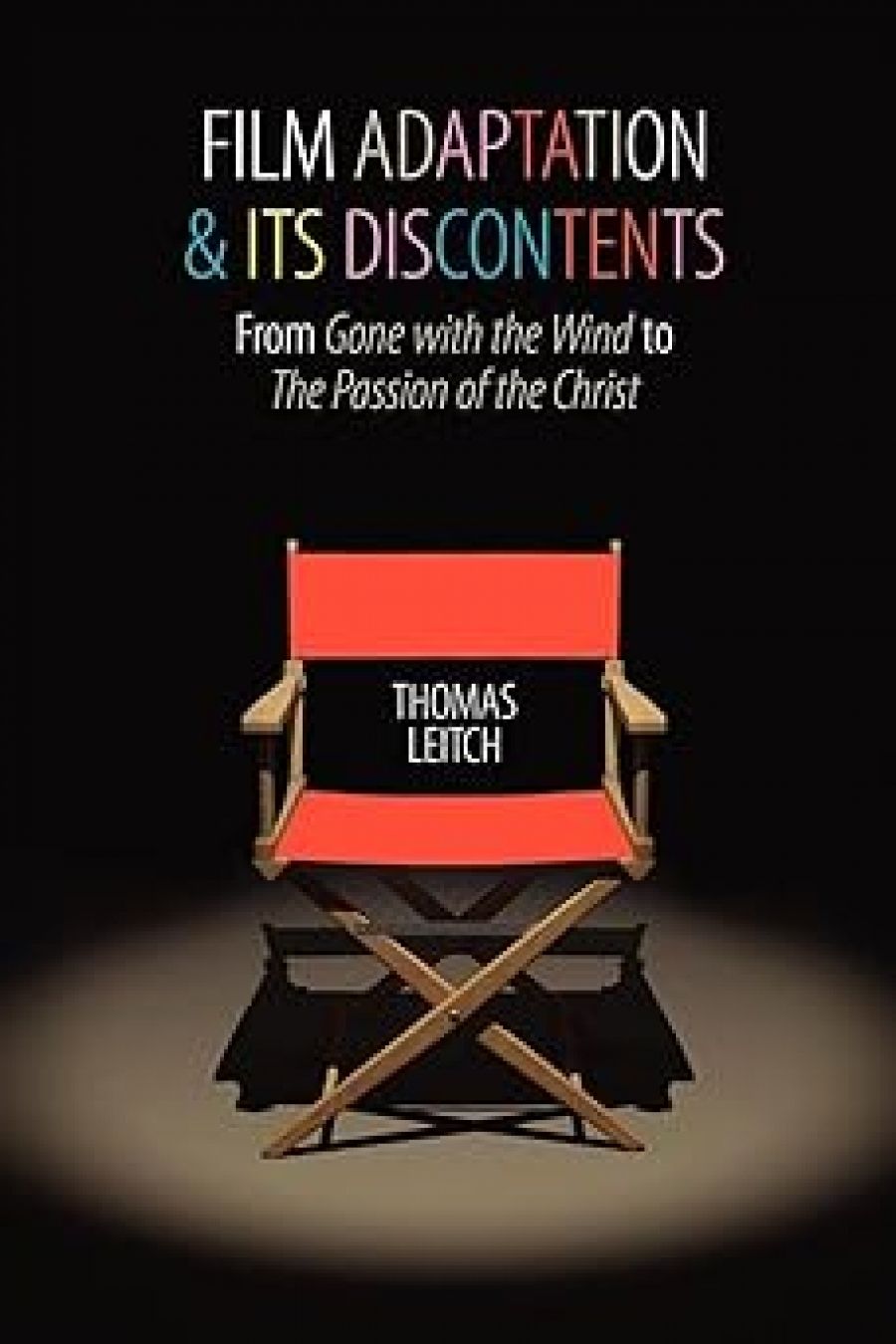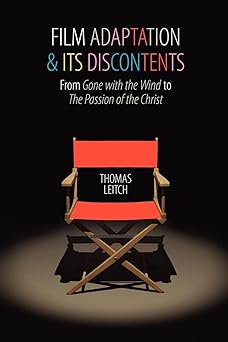
- Free Article: No
- Contents Category: Film
- Review Article: Yes
- Article Title: The colour of his breeches
- Online Only: No
- Custom Highlight Text:
If the past is a foreign country, Hollywood is another planet: they sure do things differently there. Just how differently is the predictable and tedious obsession of far too much adaptation scholarship, fixated on the degree of fidelity of a film to its adapted literary Urtext. This practice, boring and unimaginative, diverts the attention from what art can tell us about ourselves to what it can tell us about the colour of the breeches worn in the novel by that odd fellow in the twelfth chapter. Thomas Leitch, for one, is sick of it, and he has set out to shake up film scholarship and inject new life into the study of adaptation in this wide-ranging and acutely observed treatment.
- Book 1 Title: Film Adaptation and its Discontents
- Book 1 Subtitle: From Gone With The Wind to The Passion of The Christ
- Book 1 Biblio: Johns Hopkins University Press, $52.95 pb, 354 pp
- Book 1 Cover Small (400 x 600):

Given how long adaptation studies has been around – the germinal text is George Bluestone’s Novels into Film (1957), also published by Johns Hopkins University Press – it is reasonable to ask why it has failed to examine its own processes, to develop in dialogue with other humanities disciplines, to learn from and seek to explain changes in practices in film-making and to develop a coherent, dynamic theoretical framework that actually works in practice. Leitch not only asks and offers thoughtful, convincing answers to these questions, but sets out a remarkable program of analysis that seeks to do a lot of the heavy lifting in this volume.
He begins by tracing a genealogy of the field in which he argues that adaptation studies has paddled itself up a minor tributary off the calm, majestic waters of old-school literary criticism. Adaptation these days, he says, ‘falls into the gap between the study of literature as literature and the study of cinema as literature’. Seen this way, film cannot speak back to books on equal terms because the literary is inherently superior to the cinematic. Leitch goes on to examine how further developments, while appearing to shift the ground, have failed to escape this fundamental conceptual error. The theory of adaptation scholarship may have moved on, but its practices remain tranquilly undisturbed by these innovations; equally, the entire field finds itself increasingly remote from the reality of adaptation film-making.
Leitch’s analysis is compelling, but it is incomplete and rather simplistic in some places. For one thing, he takes too little account of the disabling effect that cinema can have upon otherwise perfectly sane people. To borrow a wonderfully mangled metaphor from the Boys Next Door, there is something about the movie business that makes great minds go weak at the knees. Perhaps it is star power at work; perhaps it is the childish, semiotic state that the darkened cinema invokes; perhaps it is just the dream factory doing its thing. Whatever it is, rigorous thinkers are known to swoon as soon as the talk turns to the movies: peers in other fields, so affected, may be inclined to consider film scholarship prone to insufficient objectivity, and therefore always suspect. The more lightweight instances of film criticism – including a great deal of work on adaptation, sadly – only further impugn the reputation of the entire field.
For another thing, Leitch’s characterisation of orthodox literary criticism as a basically uniform practice securely anchored in the aesthetic is no more accurate than his view of film studies as entirely captured by a leftist critique. These elements are present and often prominent in both cases, to be sure, but critics are well aware of their limitations and dangers. The humanities are much less conformist than this, and every good critic employs a sophisticated range of tools that takes into account aesthetic, historical, political and other contextual factors alike.
Once he gets down to business, though, Leitch does an excellent job. Cinema has always returned to themes of representation and reality (and often does so recursively: a great many movies are, in some way or another, about the movies). If reading is in some ways a collaboration with the writer to make a sort of movie in the reader’s mind, film-makers form a different compact with audiences, in which the plausibility and utility of their play with representation and reality is field-tested, like a visualised mind-experiment. Adaptation is the place where these two projects collide, for film-maker, critic, audience and scholar. It’s a messy business.
Leitch’s nearly comprehensive project is all the more ambitious for that complexity, but his control is impressive. His schema unfolds over a dozen chapters that survey adaptation from a range of different perspectives. He uses a great many case studies along the way without ever lapsing into tedious tut-tutting over matters of translation. He looks at biblical cinema, canonicity, the interactions between different adaptations of the same texts, and the slippage between adaptation, allusion, parody, pastiche and outright rip-off. He considers the interplay of computer games and graphic novels as well as cinema and literature, and examines the peculiar adaptive problems in the ‘from-life’ genres that range from the movie ‘based on a true story’ to the genuine documentary. He asks insightful questions about the role of commercial imperatives, competitors’ films (whether under production or previously released), personal relationships between directors, producers, stars and writers, the expectations of fandom, and the nitty-gritty of actually getting films shot, edited, distributed and watched.
Despite the book’s approachability – an interested general reader will have no trouble negotiating it – Leitch and Johns Hopkins have produced a carefully edited, well-constructed scholarly monograph. Notes throughout the text are unobtrusive, appearing as spare, aggregated endnotes over twenty pages at the back. An impressively catholic fourteen-page bibliography comes next: it is clear from the text that this is not a window display but indeed represents the range of thinkers and works consulted. Last comes an intelligently compiled and exceedingly useful sixteen-page index.
Film Adaptation and its Discontents is a call to arms, an atlas, a cookbook and a breviary. It is not only a manifesto for the next generation of scholarly adaptation critics: it is an invaluable reference text for students and scholars of film and other media; a provocation for all who like to think about the movies they see and the books they read; and a subtle, perceptive and considered study of what happens when art forms intersect.


Comments powered by CComment